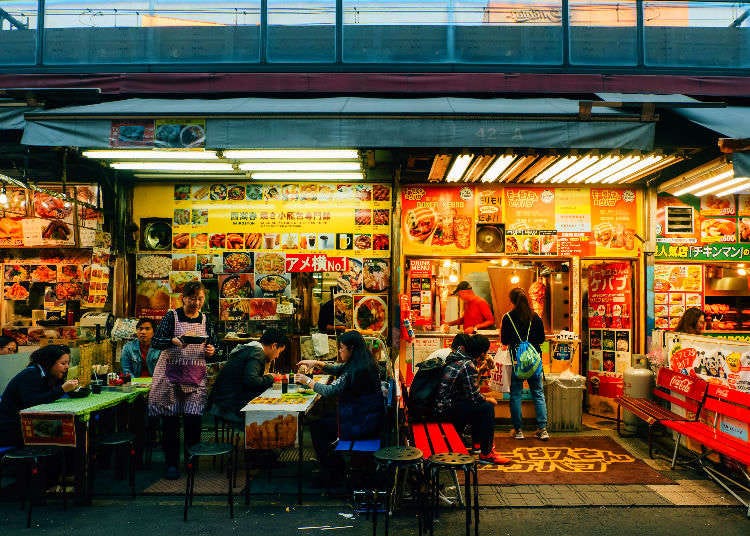
Knowing the language in a restaurant can really make or break your meal! In this article, we’d like to introduce to you some simple but extremely useful phrases to make sure you aren’t too lost in translation at restaurants in Japan.
It’s important to note that not everyone will say these exact sentences, but being able to pick out key words will make understanding and speaking much easier!
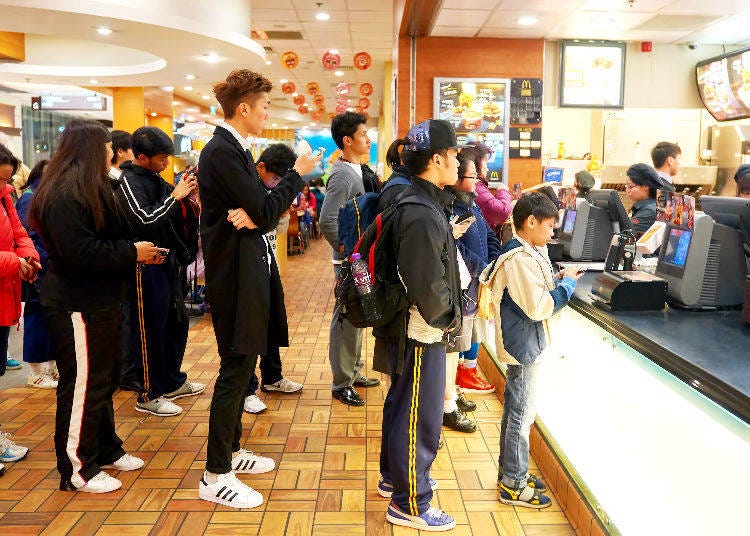
いらっしゃいませ irasshaimase / Welcome
This phrase can be heard anywhere: from cafes or small food vendors on the street to clothing shops, you will hear this many times during your trip to Japan. Also—this isn’t a phrase that needs any replying to, so don’t worry about it and just smile or bow your head a bit to them if you end up making contact!
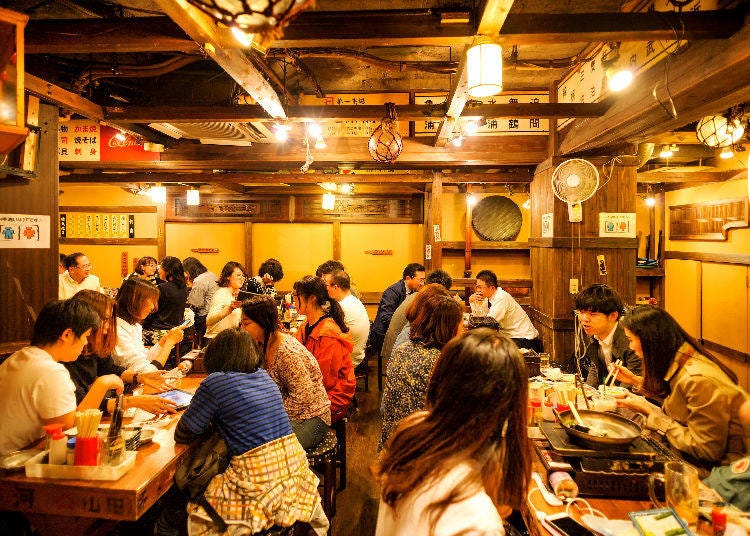
何名様ですか? Nanmei sama desu ka? / How many people (are in your party)?
Although answering by gesturing the amount of people in your party with your fingers is enough to respond to this, the ambitious can choose to answer in Japanese using the following:
One: 1人です (hitori desu)
Two: 2人です (futari desu)
Three: 3人です (sannin desu)
Four: 4人です (yonin desu)

喫煙席と禁煙席、どちらになさいますか? Kitsuen seki to kin’en seki, dochira ni nasaimasu ka? / Would you like a non-smoking or a smoking seat?
Another way that the workers may ask this question is:
おタバコはお吸いになられますか? Otabako wa osui ni nararemasu ka? / Will you be smoking?
It may be hard to believe for some people, but having a smoking section in restaurants or cafes is still extremely common! If you hear the words “kitsuen”, “kin’en”, or “tabako”, it is safe to assume they are asking this question. Here is how you can reply:
Smoking section: 喫煙席で (Kitsuen seki de)
Non-smoking section: 禁煙席で (Kin’en seki de)
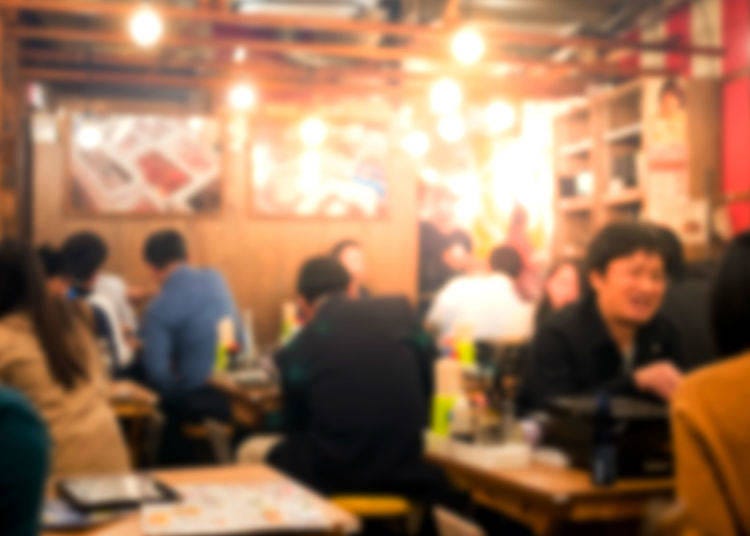
ご注文お決まりになりましたら、お呼びください。 Gochuumon okimari ni narimashitara, oyobi kudasai. / Please let me know when you have decided your order.
Keywords: Chuumon, order; okimari, decided
To this, you can just reply with a simple “hai (yes).” In Japan, they will not come wait at your table like they do in many countries like the US. Once you have decided your order, it’s likely that you will have to get the attention of the staff by calling, “Sumimasen (Excuse me)!” It might be awkward at first, but don’t feel bad about calling the staff! If you’re lucky, however, the restaurant or café may have a bell with a button you can press at your table that will automatically call the staff over.
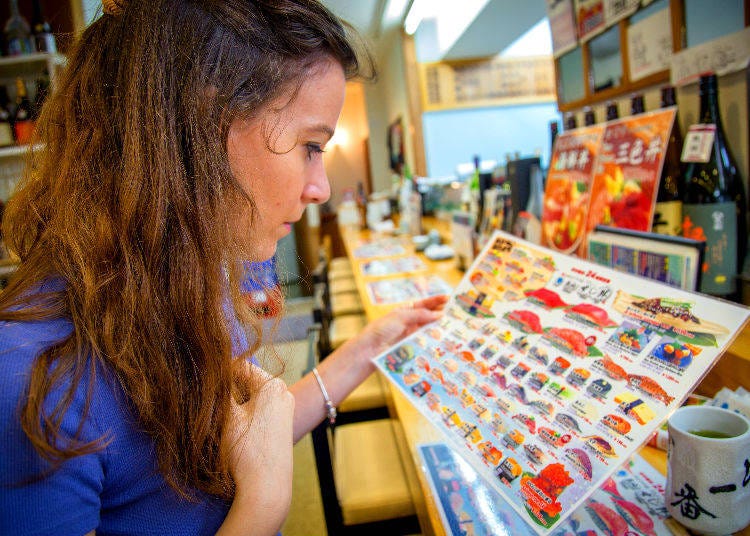
ご注文は以上でよろしいですか? Gochuumon wa ijou de yoroshii desu ka? / Is that all for your order?
Once the waiter thinks that you are done ordering, they are likely to ask you this question. If you are done, you can say “hai”, and if you are not, you can just continue ordering.
As a tip, we think it’s easier to just say “ijou desu (that’s all)” when you are finished ordering before the staff asks to avoid any confusion!
店内でお召し上がりですか? Tennai de omeshi agari desu ka? / Would you like this for here?
Yes: Hai
No: Omochi kaeri de (onegai shimasu). This means, “Take out (please).”
お持ち帰りですか? Omochi kaeri desu ka? / Would you like this to go?
Yes: Hai
No: Tennai de (onegai shimasu). This means, “For here (please),”
(ご一緒に) お飲み物はいかがですか? (Go issho ni) onomimono wa ikaga desu ka? / Would you like a drink (with that)?
Keyword: Onomimono, a drink
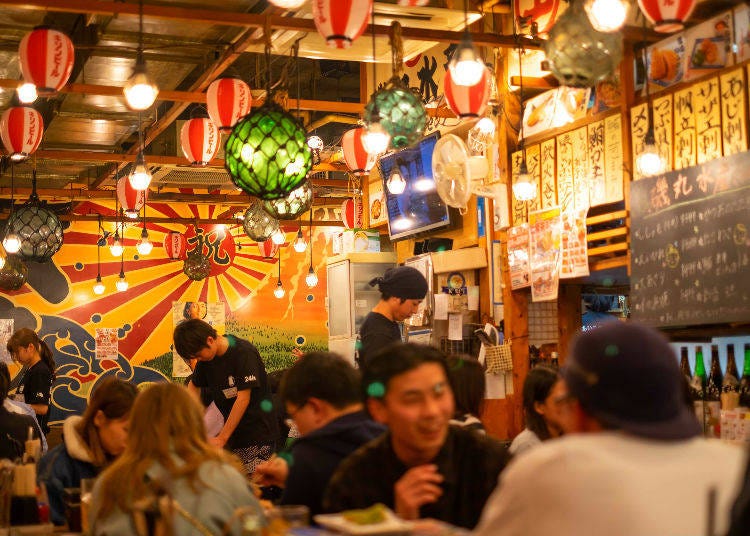
こちらお下げしてよろしいですか? Kochira wo osage shite yoroshii desu ka?
May I take this? / Are you done with this?
When it looks like you are done eating/drinking your order, the staff will usually come to your table and ask this. You can reply in the following ways:
Yes: Hai
No: Iie/Mada desu/Mada tabeteimasu/mada nondeimasu (No/Not yet/I’m still eating/I’m still drinking)
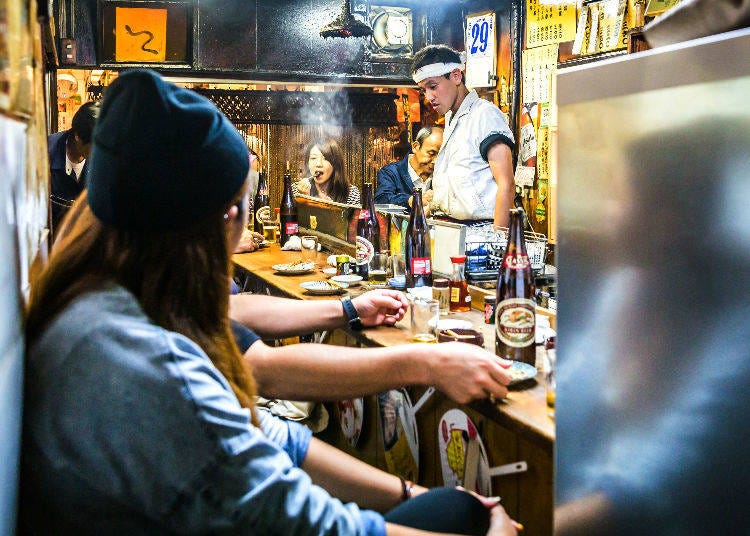
お会計お願いします Okaikei onegai shimasu. / Check, please.
Since the staff usually won’t come to your table unless called, you will probably have to call the waiter over and tell them this to get your bill.
ご一緒でよろしいですか? Goissho de yoroshii desu ka? / Will this be together?
Keyword: Goissho, together
When paying, it’s common to ask if you would like to pay together or separately. If you would like to pay separately, you should reply with, “betsu betsu de (onegaishimasu)”. This means “separately (please)”.
Bonus:
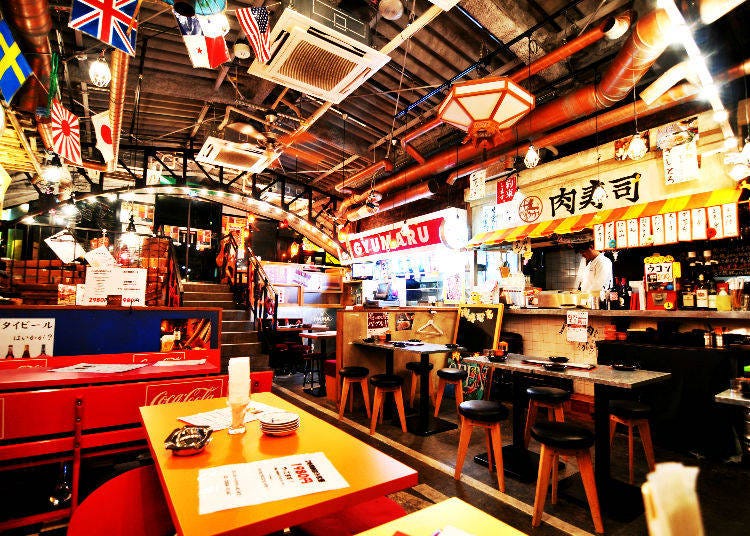
日替わりメニューは〜〜となっておりますので… (Higawari menyuu wa ~~ to natte orimasu no de…) / ~~ is today’s special (menu item)...
While this is not common at all restaurants, it is still seen often. This phrase is often followed by some explanation of the item. You can just reply to this saying, “Hai, arigatou gozaimasu (Okay, thank you).”
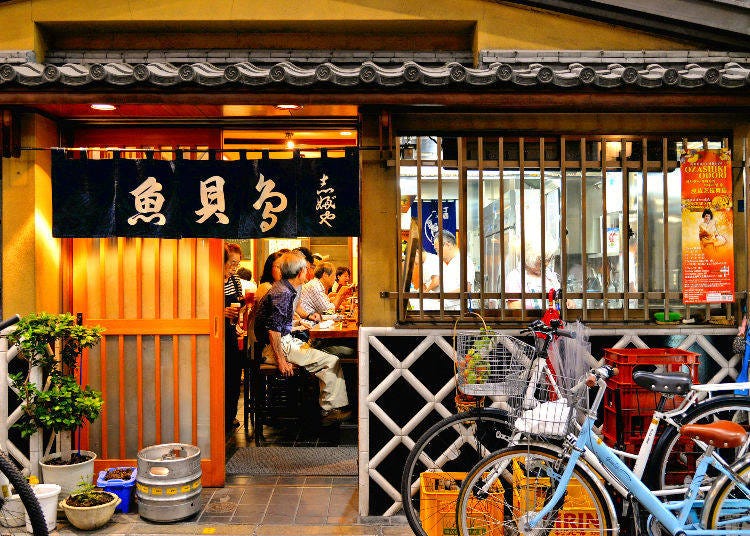
お食事ラストオーダーとなりますがいかがなさいますか? (Oshokuji rasuto oodaa to narimasu ga ikaga nasaimasu ka?) / We are taking last food orders now, would you like anything?
お飲み物ラストオーダーとなりますがいかがなさいますか? (Onomimono rasuto oodaa to narimasu ga ikaga nasaimasu ka?) / We are taking last drink orders now, would you like anything?
To answer this, you can say the names of the items you would like to order. If you don’t need anything, you can say “Daijoubu desu (I’m/we’re okay).”
Keyword: Rasuto oodaa, last order
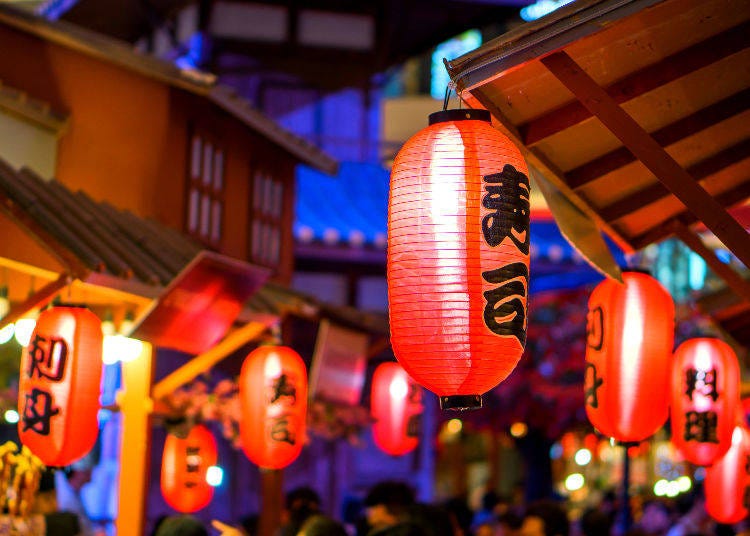
At first, speaking in Japanese can seem very intimidating, especially if you are only a beginner! Don’t worry though—Japanese people are usually very happy to help and appreciate you trying your best to speak in Japanese to them. While this may not apply to all situations or make you completely fluent in the language, it will definitely help you get the most out of your Japanese food experience! Oh, and while leaving, don’t forget to tell the staff, “Gochisou sama desu (Thank you for the meal)”!
Written by Lindsey Schultz
- Category
*Prices and options mentioned are subject to change.
*Unless stated otherwise, all prices include tax.
Popular Tours & Activitiess
Recommended places for you
-

Asai
Japanese cuisine
Namba, Dotonbori, Shinsaibashi
-

Sushi Tamahime KYOTO
Japanese cuisine
Kyoto Station, To-ji Temple
-
Menu

Ganso Kamameshi Haru
Japanese cuisine
Asakusa
-

KITCHO Main store
Japanese cuisine
Umeda, Osaka Station, Kitashinchi
-

NIHONRYOURIJAPANIHZUKYUIJIHNUSAKURAGAOKA
Japanese cuisine
Shibuya
-

KitazuienUmeda
Japanese cuisine
Umeda, Osaka Station, Kitashinchi
-

Enjoy Japan's Gorgeous Winter Lights! Ride the Romancecar to Shonan no Hoseki Illumination
by: Guest Contributor
-

Get Ready to Catch 'Em All! First Ever Permanent Outdoor Pokémon Park Opening Near Tokyo!
-

See Asakusa and Tokyo Skytree® in a New Light at the "Také Akari" Festival (Winter 2025-2026)
by: Guest Contributor
-
Ad

Walk in the Footsteps of Believers: A 4-Day Pilgrimage Across Goto Islands, Nagasaki Prefecture
by: Yohei Kato
-

A Travel Game Changer! Go Hands-Free Between Tokyo and Kyoto with LUGGAGE EXPRESS by JTB and JR Tokai
by: Guest Contributor
-

Don't Miss Out! The One Thing You Must Do Before Shopping at Mitsui Shopping Park LaLaport: Get Your Max 10% OFF Coupon Book
-

Nikujaga Recipe: A Deliciously Simmered Meat-and-Potatoes Japanese Classic!
-

Sumikawa Snow Park: Skiing in Northern Japan's Breathtaking Backcountry
-

Fine Japanese dining in Tokyo
-

Essential Tokyo: The Complete Guide to Ikebukuro Station
-

Why Hokkaido’s Hairy Crabs Are So Popular: Firm Meat Most Delicious in Spring!
-

Indulging in Authentic Japanese Cuisine
- #best sushi japan
- #what to do in odaiba
- #what to bring to japan
- #new years in tokyo
- #best ramen japan
- #what to buy in ameyoko
- #japanese nail trends
- #things to do japan
- #onsen tattoo friendly tokyo
- #daiso
- #best coffee japan
- #best japanese soft drinks
- #best yakiniku japan
- #japanese fashion culture
- #japanese convenience store snacks












